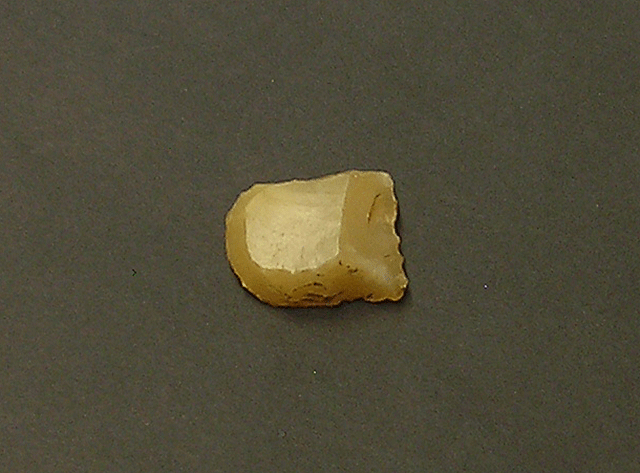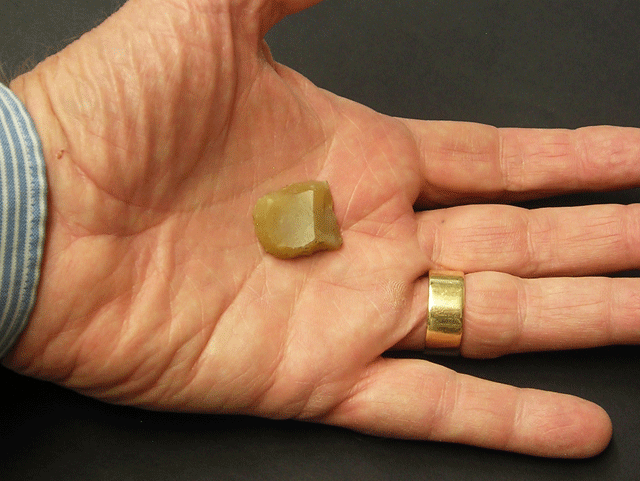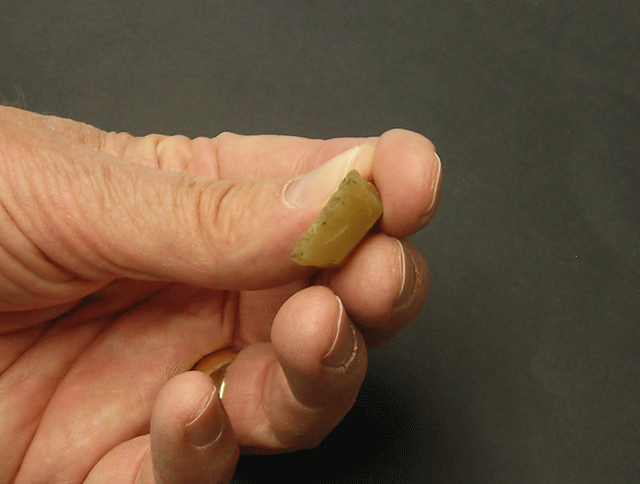

2015.2.60, French gunflint
This small chip of flint (just under 2.4 centimeters or 1 inch long) is more important than it looks. It's a gunflint, and was used in a flintlock rifle. Pulling the trigger caused the flint to strike steel and throw off sparks, igniting gunpowder. Flintlock rifles were in wide use from the 1600s until the early 1800s, when they were replaced by rifles using percussion caps.
This particular gunflint was found in the U.S., but it was an import. During the flintlock era, central France produced gunflints for internal use and for export, and honey-colored French flints (such as the one shown above) were widely seen as the best available. Given the popularity of French gunflints, it's not surprising that one turned up across the Atlantic Ocean.
Was this gunflint from a Native American village or a Euroamerican frontier farm? Or even from a military camp or battlefield? Sadly, we don't know. The gunflint turned up in a shoebox of privately collected arrowheads, donated to the museum after the original collector died. The family member who donated the collection could only guess where it came from. The materials used for the arrowheads indicate that the collection comes from the Midwest—still rather vaugue. If the location of the gunflint had been recorded when it was found, it would be far more valuable for understanding U.S. history. A lot of archaeological field training is about how to document things as they're found, so that the all-important context of the discovery isn't lost.
The next two photos may give you a better sense of the size and shape of the
gunflint.


To return to the thumbnail, please click here.
All content copyright © Maxwell Museum of Anthropology, University of New Mexico. A high-resolution verson of this photograph may be ordered from the Maxwell Museum's photo archives. Please make note of the catalogue number. For more information please visit the photo archives web page
Page last revised on February 24, 2015. Please report problems to toh@unm.edu